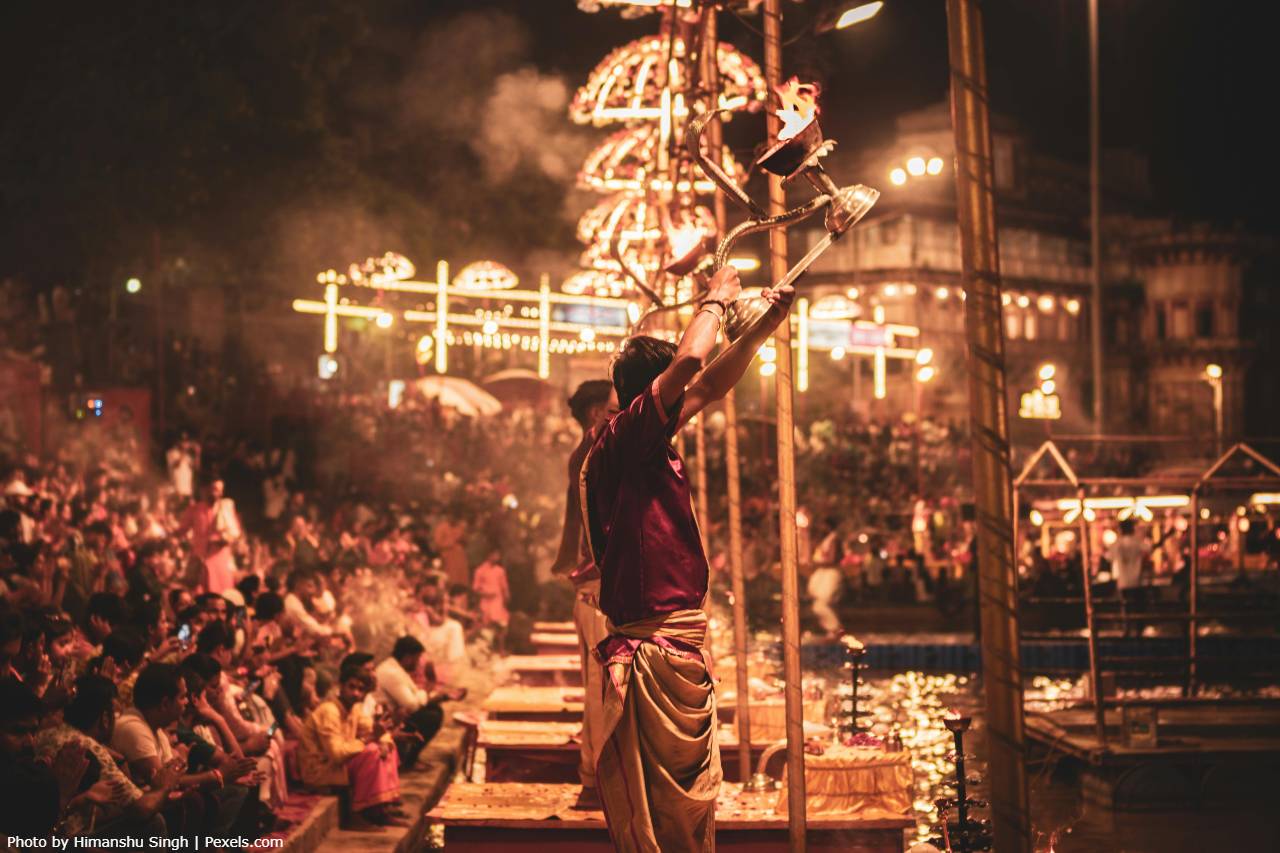India is seeing a steady rise in tourists from the UK. According to India’s Ministry of Tourism, over 1.2 million visitors from Britain arrived in 2024, making the UK one of India’s top inbound markets. Many of these travellers are now looking beyond monuments and beaches, seeking experiences that reveal the real, living culture of India. And what better way to do that than through its festivals and cultural events?
Every season in India brings a new story, a new rhythm, and a celebration somewhere. From classical dance shows under ancient temples to colorful fairs in the desert, these events are windows into India’s art, history, and community life.
Here’s your guide to India’s most fascinating cultural events, divided by region.
North India: Where History Meets Performance
Taj Mahotsav, Agra
Held every February near the Taj Mahal, this 10-day fair celebrates India’s crafts, cuisines, music, and folk art. Imagine strolling through stalls filled with handwoven textiles while live folk music fills the air. It’s the perfect way to pair your Taj Mahal visit with a taste of India’s living heritage.
Jaipur Literature Festival, Rajasthan
Often called the “greatest literary show on Earth,” this January festival gathers authors, thinkers, and artists from around the world. The backdrop of Jaipur’s historic palaces gives the entire event a royal charm.
Khajuraho Dance Festival, Madhya Pradesh
Dancers from across India perform classical forms like Kathak and Bharatanatyam against the stunning backdrop of Khajuraho’s ancient temples. The combination of art and architecture makes this festival truly unforgettable.
Ganga Aarti, Varanasi
Every evening at sunset, priests perform synchronized rituals with lamps and chants on the banks of the Ganges River. Watching it from a boat is a deeply moving experience that connects you with India’s spiritual traditions.
West India: Colors of Desert and Sea
Pushkar Camel Fair, Rajasthan
This world-famous fair takes place in October or November. Thousands of camels, decorated with beads and bells, gather for trade, contests, and parades. Add to that the music, dances, and desert bazaars, and you get one of India’s most photogenic events.
Rann Utsav, Gujarat
From November to February, the white salt desert of Kutch turns into a carnival of tents, lights, crafts, and folk music. Stay overnight to see the moonlight reflecting off the white sands. It’s magical.
Goa Carnival and Shigmo Festival
Goa’s Carnival in February bursts with floats, costumes, and parades influenced by Portuguese traditions. The spring-time Shigmo festival adds another layer of color, blending Hindu and Goan cultures in one lively street celebration.
South India: Rhythm, Faith, and Classical Grace
Onam, Kerala
Celebrated around August or September, Onam is Kerala’s grand harvest festival. Locals decorate homes with flower carpets, cook traditional feasts called Sadya, and hold snake boat races. It’s welcoming, joyful, and beautifully inclusive.
Chennai December Music Season (Margazhi Season)
Between December and January, Chennai becomes the global capital of Carnatic music. Hundreds of concerts fill the city, from small halls to large auditoriums. If you love music, this is India’s most soulful season.
Konark Dance and Music Festival, Odisha
Hosted near the famous Sun Temple, this festival brings together the best of India’s classical dancers. The open-air stage, with the temple glowing in the background, creates a dreamlike setting.
East India: Festivals of Faith and Art
Durga Puja, Kolkata and West Bengal
Every autumn, Kolkata turns into a city-wide art exhibition. Gigantic themed “pandals” (temporary temples) showcase creativity, while music, street food, and rituals continue for days. UNESCO recently recognized this as an Intangible Cultural Heritage event.
Rath Yatra, Puri
One of India’s oldest festivals, Puri’s Rath Yatra sees three towering chariots carrying deities through the streets, pulled by thousands of devotees. It’s a spectacular display of devotion and unity.
Central India: Music and Ancient Temples
Khajuraho Dance Festival
Mentioned earlier but worth repeating. This festival defines the heart of India, a perfect mix of history and performing arts.
Tansen Music Festival, Gwalior
Held in December, this festival honors Tansen, one of India’s greatest classical musicians. Set against the backdrop of Gwalior Fort, it attracts maestros and music lovers from around the world.
Northeast India: Living Traditions and Tribal Spirit
Hornbill Festival, Nagaland
Every December, the tribes of Nagaland come together for ten days of dance, craft, and music. Visitors can explore traditional huts, taste local cuisine, and watch tribal performances. It’s often called “the festival of festivals” and is a must-see for cultural explorers.
Tips for UK Travellers Attending Indian Festivals
- Plan Ahead: Many festivals follow the lunar calendar. Check dates early and book your hotels months in advance, especially for popular ones like Rann Utsav and Pushkar Fair.
- Travel Smart: India is large. Combine nearby festivals in one region rather than rushing across the country.
- Dress Respectfully: Modest clothing is appreciated at religious or cultural sites.
- Stay Hydrated: Some festivals happen in warm or dry regions like Rajasthan or Gujarat. Carry water and sunscreen.
- Use Local Guides: They add context and help you understand the stories and traditions behind the performances.
- Be Present: Festivals can be overwhelming. Take photos, but also pause to just watch, listen, and feel.
For travellers from England, India’s cultural festivals offer something truly special. They are not just events, but living stories that connect people, art, and history. Whether it’s watching dancers move before a thousand-year-old temple or walking through lantern-lit streets during Durga Puja, these moments let you experience India’s heart.
If you plan your trip around these festivals, you’ll take home more than photos. You’ll carry a piece of India’s spirit with you: timeless, vibrant, and unforgettable.

